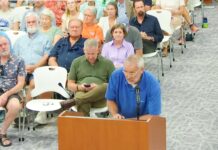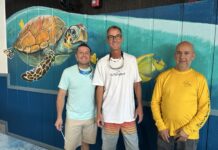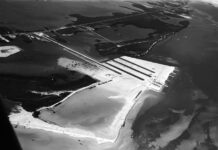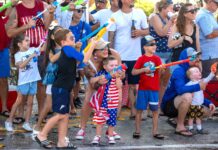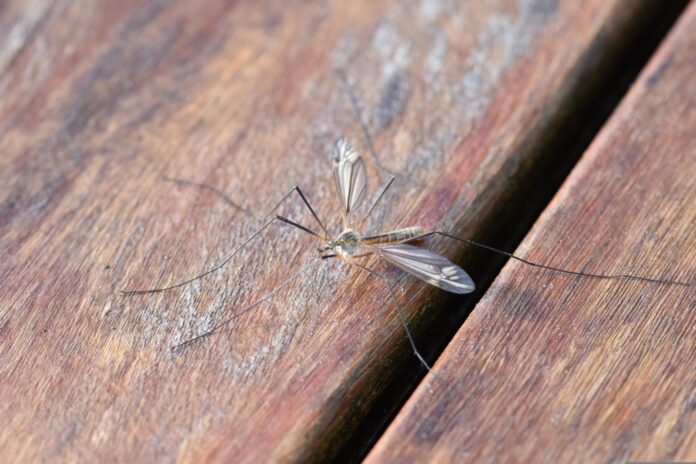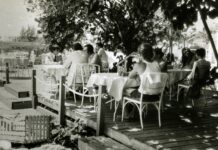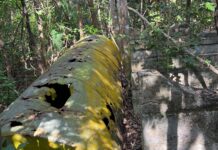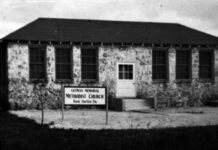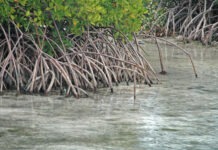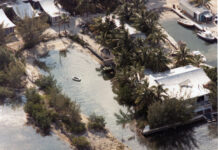What was the most dangerous thing facing the fighting men of the anti-piracy unit called the West Indies Squadron? It was not the pirates, but a wee foe called the mosquito.
A document titled “The Repression of Piracy in The West Indies” and published in the December 1911 edition of the U.S. Naval Institute’s Proceedings magazine revealed this observation: “(T)he men who sailed with Commodore Porter had their full share of hazard and adventure. But the climate was so much more deadly than the fighting, the mortality from yellow fever so much greater than that due to malice of pirates, that a raid or a skirmish was a trivial matter in comparison with the hardships of a summer’s cruise. At any rate, most of the reports are sober and modest, and even the journalists of the day failed to recap a sensational harvest.”
This is not to say that pirates in the West Indies did not pose a threat, because they did, though their escapades were not the same as those swashbuckling tales written in books and appearing on television and movie screens. One of the pirates operating in the West Indies with a particularly nasty reputation, one who pushed President James Monroe to sign “An Act to Protect the Commerce of the United States, and Crimes of Piracy” into law on March 3, 1819, was a Cuban pirate named Diabolito.
The act authorized President James Monroe (namesake of Monroe County) to create a unit of the Navy that would become known as the West Indies Squadron. The mission of this specialized force was to combat piracy and fight efforts being made to continue the slave trade.
Diabolito was known as a particularly aggressive Cuban pirate, familiar with the West Indies Squadron both before and after Commodore David Porter took command and brought his forces to Key West. The story of Diabolito is typical of the kind of piratical events that are connected to the Florida Keys. While not a Keys pirate, he used the skinny waters surrounding the Keys to escape government pursuit in his shallow-draft pirate schooner.
At least twice, Diabolito engaged with the anti-piracy forces of the West Indies Squadron. The first engagement was recorded in the article published in Proceedings magazine: “The rover had escaped from the active pursuit of Lt. Watson, U.S.N, in July 1823, when the boats of the Mosquito and Gallinipper, manned by only 26 seamen, chased a topsail schooner and a barge into Seguipa Bay. The schooner anchored with a spring on her cable, and her long nine and two six-pounders opened with grape. The boats (Mosquito and Gallinipper) dashed in with cheers – ‘Huzza for Allen!’ and that sort of thing – and the pirates jumped overboard; some were killed in the water, but Diabolito survived to renew his piracies.”
The “Huzza for Allen!” shouted by the seamen of the West Indies Squadron referenced the death of Lt. William Allen of the U.S. schooner Alligator, one of the ships dedicated to the West Indies Squadron, who was killed during a pirate fight off the Cuban coast in November 1822. Some stories about Diabolito suggest that the pirate was one of the leaders of the horde attacked by Allen and the crew of the Alligator. Government records, however, do not seem to indicate that was the case.
While pirates in the Florida Keys are a historical rarity, piracy will always be connected to the island chain through the history of the West Indies Squadron. When Commodore Porter decided to establish a military depot at Key West, he issued a General Order from the U.S.S. Peacock on April 6, 1823. Porter wrote: “A Salute of 17 guns is to be find (fired) at 8 o’clock this morning from the Battery in front of the Town, and the American Ensign is to be hoisted at the Flag Staff. … The Town is hereafter to be called Allenton, and the Battery, Thompson’s Battery.”
The name Thompson was chosen for the depot to honor the Secretary of the Navy, Smith Thompson. The name for the town developing on Key West, Allenton, was a tribute to the fallen Allen, commander of the Alligator. Seventeen guns were fired in salute.
The second time U.S. forces engaged Diabolito, he would not be so lucky. Lt. William H. Watson of the Gallinipper and Lt. William Inman of the Mosquito, part of Commodore David Porter’s much-heralded Mosquito Fleet, engaged the pirate schooner Catalina off the coast of Cuba.
Though the pirate force of 70 to 80 outnumbered the American force, Lt. Watson ordered his men to attack. The pirates were chased away from the island and out to sea. Panicked, the pirates began to abandon their ship and attempted to swim back to shore. The American seamen opened fire on the pirates, and dozens of them were shot and killed as they attempted to swim to safety. Among the dead was Diabolito, who was killed in the water after he refused to surrender. Local authorities captured the pirates who survived the barrage.
Local authorities, however, were unable to capture the true villains of the West Indies as they fed off the men of the West Indies Squadron and left behind a little present called yellow fever. It was not until the 1880s that the Cuban doctor Carlos Finley theorized that mosquitoes transmitted the disease. His theory was not taken seriously.
How dangerous were mosquitoes? During the Spanish American War, it is suggested that 1,000 men died in combat, and another 5,000 succumbed to disease – largely yellow fever.



